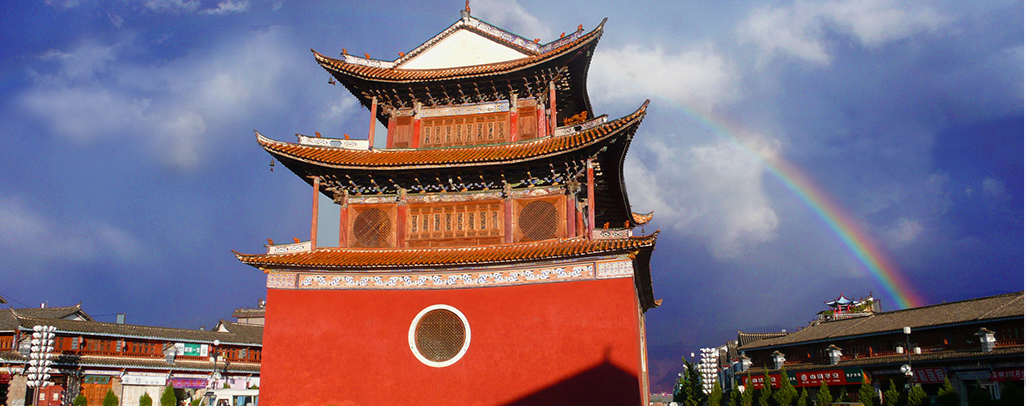Heqing County has a variety of topographical types including mountains, hills, small basins, and river valleys. It is high in altitude to the northwest and low to the southeast, with two small narrow basins in the south and the north separately: Huangping Basin in the south is a low-lying warm valley with an altitude of 1,300-1,700 m; Heqing Basin in the north is a warm valley with a medium altitude of 2,000-2,300 m. There are many mountains in the County: the Ma’ershan Mountain stands in the northwest with a 3,925-meter main peak; the Shibaoshan Mountain extends from east to west in the east with a 3,628-meter main peak; the Sijiaoshan Mountain, Yunhuashan Mountain and other mountains stand in the south. The lowest point in the County is Luolang Village near the Jinshajiang River, at an altitude of 1,162 m, which is 2,763 m lower than the main peak of Ma’ershan Mountain. A number of rivers run across the County, including the Jinshajiang River, Yanggongjiang River, Luolouhe River and Hechuanhe River. The Jinshajiang River has a deep river course with a big difference in elevation at different sections, creating rich hydropower resources. It runs through the County in the east, passing through a number of villages including Daqing, Jinhe, Jiangdong, Zhongjiang, Hemi, Qingbei, Duomei, and Luolang, and finally goes southeast into Yongsheng County. The Yanggongjiang River runs across the County from the north to the south and feeds into the Jinshajiang River in the southeast. The County has rich groundwater resources with nearly 100 spring-fed pools (also known as dragon pools), earning itself the name “A Land of Spring Pools”. A wide span of wetland spreads around Mutun Village in the Heqing Basin with rich water and grass resources, earning Heqing another name “A Land of Fish and Rice”.

